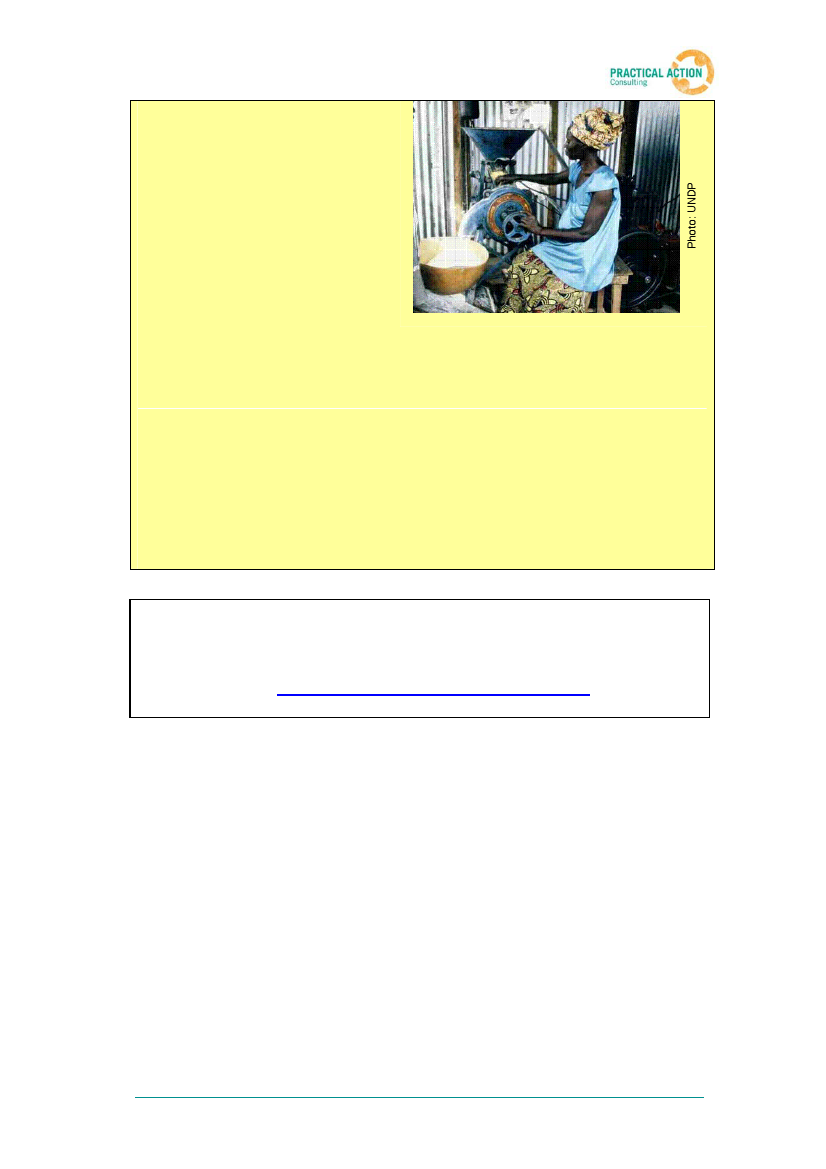
users. Prices are similar to those of the
traditional cereal mills.
Livelihood Benefits
• An increase in the average annual
income of platform users by US$ 68,
representing a 56% increase in rural
Mali;
• Average saving of 2.5 hours per day
of the time women spends on
activities such as manual grinding and
water pumping, which can be spent on
other income-generating activities;
• Reduced seasonal liquidity problems and mitigate adverse shocks (e.g., natural,
economic, or political disasters) by improving health, generating additional non-farm
income during the dry season, raising the total net income of households, and
empowering women to participate in economic decision making;
• Provides employment (and new income opportunities) for women operating the
multifunctional platform;
• Women have also been able to improve their health. The platform project led to a rise in
the number of prenatal visits to health clinics due to an increased income and reduced
time spent on domestic activities and reduced drudgery and hard manual labour thanks
to platform services;
• Increased level of girls’ attendance in primary school and improved proportion of school
children completing primary education is possible due to reduced time spent on
domestic activities
Bio-energy (e.g. biofuel, charcoal etc) case studies available
PISCES / Practical Action / FAO Small scale bio-energy initiatives report on
the Programme Impact & Learning PPE site
3. Investment finance and end-user finance
3.1.
Investment finance for an NGO or enterprise
Investment finance is an important consideration for an NGO project or enterprise
seeking to establish or scale-up a renewable energy project. Investment finance is
required to purchase fixed assets and to use as working capital during the start-up
period. Fixed assets are assets that have a life more than one year and generally
have a high cost, such as equipment, vehicles or owned premises. Working capital
is the money required for operations in advance of payment from customers, such
as salaries, supplies and overheads. 38
This chapter will describe the three kinds of external finance: grants, equity and
debt and discuss advantages and disadvantages. Profits are also a source of
internal finance. If the NGO or enterprise is already operational, a portion of the
profits can be retained for further investment.
Renewable Energy to Reduce Poverty in Africa
25